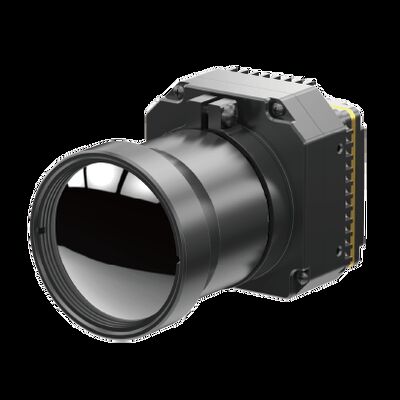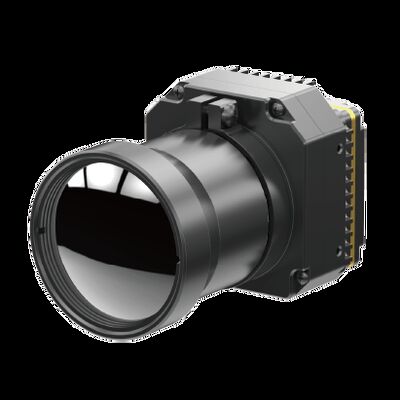-
Base termal de la cámara
-
Cámara de seguridad termal
-
Cámara termal del abejón
-
Cámara térmica enchufable
-
Detectores infrarrojos refrescados
-
Módulos refrescados de la cámara
-
Proyección de imagen óptica del gas
-
Módulo termal infrarrojo de la cámara
-
Módulo termal de alta resolución de la cámara
-
Cámara termal para la detección de la fiebre
-
Cámara termal montada vehículo
-
Asamblea más fresca integrada del Dewar
-
Detectores infrarrojos sin enfriar
Módulo sin enfriar de la toma de imágenes térmica de la voz de la alta definición para la termografía industrial

Éntreme en contacto con gratis las muestras y los vales.
Whatsapp:0086 18588475571
Wechat: 0086 18588475571
skype: sales10@aixton.com
Si usted tiene alguna preocupación, proporcionamos ayuda en línea de 24 horas.
x| Resolución | el 1280x1024/12μm | NETO | <50mK |
|---|---|---|---|
| rango espectral | los 8~14μm | Tamaño | 20x20x10.4m m |
| Resaltar | Módulo sin enfriar de la toma de imágenes térmica de la voz,Módulo industrial de la termografía,Módulo termal de la alta voz de la definición |
||
Módulo de imágenes térmicas VOx sin enfriar de alta definición para termografía industrial
PLUG1212R es uno de los módulos de cámara infrarroja sin enfriar de la serie PLUG-R desarrollados por SensorMicro.Se basa en un detector infrarrojo sin enfriar de 1280x1024/12μm con circuito profesional de procesamiento de señales y plataforma de procesamiento de imágenes, transforma completamente la radiación infrarroja de destino en datos de temperatura.que cumplen los requisitos específicos de la termografía industrial.
El módulo de imágenes térmicas VOx HD LWIR 1280x1024/12μm sin enfriar ofrece un amplio rango de medición de temperatura, lo que permite diversas aplicaciones en campos como la inspección industrial, la vigilancia,y seguridadCon un rango de temperatura que abarca tanto las temperaturas bajo cero (-20°C) como los ambientes de alta temperatura (hasta 550), este módulo se adapta a las demandas de varios escenarios de imágenes térmicas.
- El paso de los píxeles: 12 μm
- Resolución: 1280x1024
- Rango de espectro: 8 μm -14 μm
- Alta sensibilidad: NETD < 30mK
- Rango de temperaturas: -20°C a 150°C, 100°C a 550°C
- Precisión de la temperatura: ±2°C o ±2%
- Alta fiabilidad y fuerte adaptabilidad al medio ambiente.
| Modelo | Se aplicará el método siguiente: |
| Rendimiento del detector IR | |
| Resolución | 1280x1024 |
| Pitch de los píxeles | 12 μm |
| Rango espectral | 8 ~ 14 μm |
| DNI de las empresas | < 30 millones de toneladas |
| Procesamiento de imágenes | |
| Tasa de fotogramas | 25 Hz |
| Tiempo de arranque | < 25 s |
| Video analógico | / |
| Video digital | Se aplicarán las siguientes medidas: |
| Componente de extensión | USB/Camerlink: el dispositivo de conexión de cable de la cámara |
| Modo de atenuación | Se trata de un sistema de control de las emisiones de gases de escape. |
| Zoom digital | 1 ~ 8X Zoom continuo, tamaño de paso 1/8 |
| Muestra de imagen | Negro caliente/blanco caliente/pseudo-color |
| Dirección de la imagen | El valor de las emisiones de gases de efecto invernadero es el valor de las emisiones de gases de efecto invernadero. |
| Algoritmo de imagen | NUC/AGC/IDE: el nombre del operador |
| Especificación eléctrica | |
| Interfaz externa estándar | Interfaz 50pin_HRS |
| Modo de comunicación | Se trata de un sistema de transmisión de datos. |
| Válvula de alimentación | 5 ± 0,5 V |
| Medición de la temperatura | |
| Rango de temperatura de funcionamiento | -10°C a 50°C |
| Rango de temperatura | -20°C a 150°C, 100°C a 550°C. Las temperaturas más bajas son las más bajas. |
| Precisión de la temperatura | ±2°C o ±2% (tomar el valor máximo) |
| El SDK | ARM/Windows/Linux SDK, termografía de pantalla completa |
| Características físicas | |
| Dimensión (mm) | 56 por 56 por 40.2 |
| Peso | ≤ 200 g |
| Adaptación al medio ambiente | |
| Temperatura de funcionamiento | -40 °C ~ +70 °C |
| Temperatura de almacenamiento | -45 °C ~ +85 °C |
| Humedad | 5% a 95%, no condensante |
| Vibración | Vibración aleatoria 5,35 gramos, 3 Ejes |
| El choque | Onda de medio seno, 40g/11ms, 3 Ejes 6 Dirección |
| Optica | |
| Lentes opcionales | Foro fijo atérmico: 19 mm/25 mm |
El módulo de imágenes infrarrojas PLU1212R se utiliza ampliamente en electricidad eléctrica, visión automática, inspección de edificios, metalurgia petroquímica, etc.
![]()
![]()
1¿Cómo funciona un detector infrarrojo?
Los detectores infrarrojos funcionan detectando radiación electromagnética en el rango infrarrojo.
Los detectores térmicos funcionan midiendo el cambio de temperatura causado por la absorción de la radiación infrarroja.Los microbolómetros consisten en una matriz de pequeños elementos resistivos sensibles al calorCuando la radiación infrarroja es absorbida por el detector, hace que la temperatura del elemento resistivo aumente.que produce un cambio en la resistencia eléctrica que puede ser detectada y convertida en una imagen.
Los detectores de fotones, por otro lado, trabajan convirtiendo los fotones de la radiación infrarroja en señales eléctricas.Dos tipos comunes de detectores de fotones son detectores fotovoltaicos y fotoconductoresLos detectores fotovoltaicos generan un voltaje cuando se absorben fotones infrarrojos, mientras que los fotoconductores aumentan su conductividad cuando se absorben fotones.
Los detectores infrarrojos también pueden utilizar otros mecanismos de detección, como la piroelectricidad, donde los cambios de temperatura inducen una carga en un material, o efectos termoeléctricos,donde una diferencia de temperatura entre dos materiales genera un voltaje.
La señal de salida del detector de infrarrojos puede procesarse y mostrarse como una imagen, que se puede utilizar para una variedad de propósitos, como la obtención de imágenes térmicas en aplicaciones médicas o industriales,detección remota del medio ambiente, y el escaneo térmico en los sistemas de seguridad.




